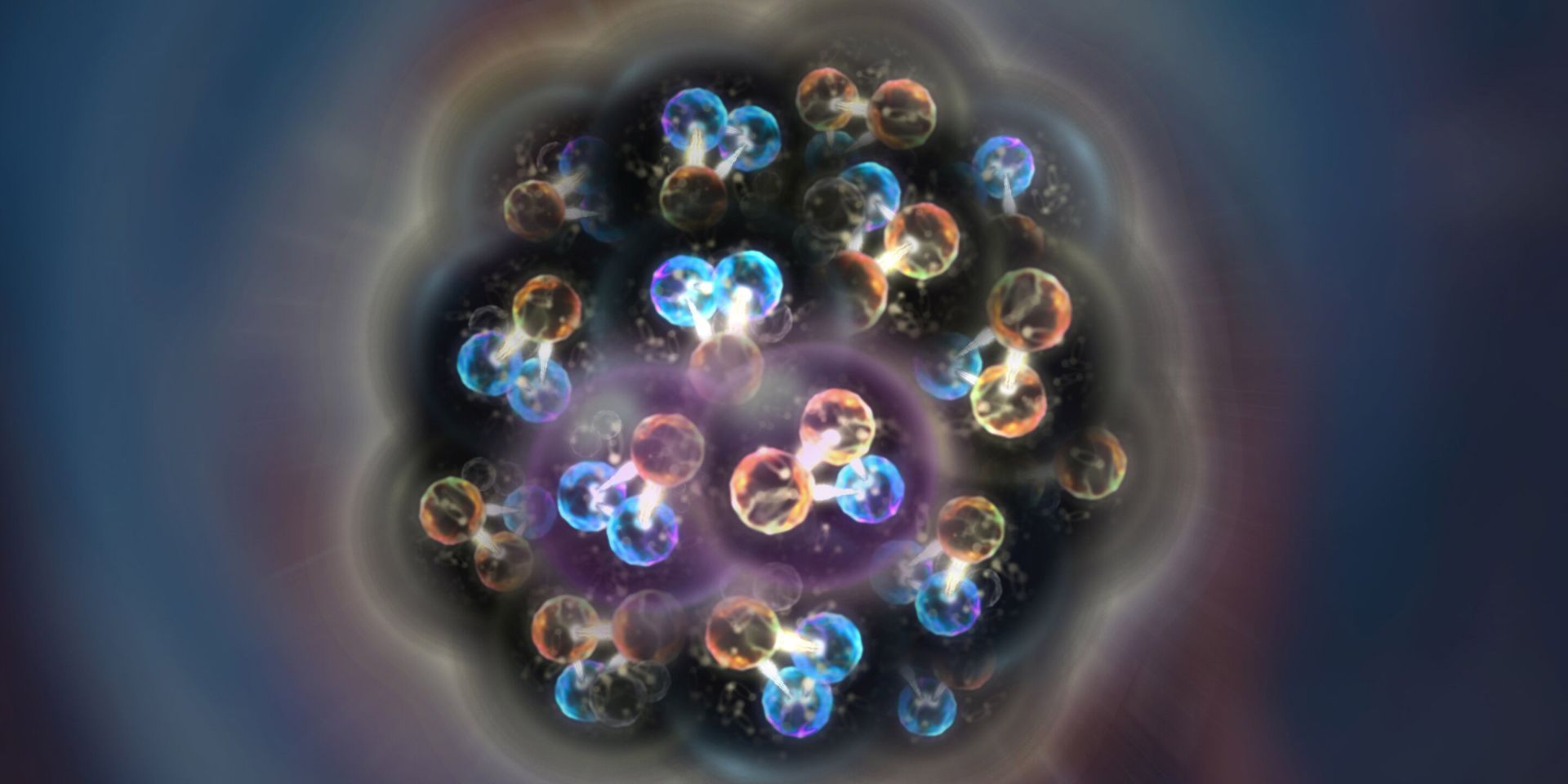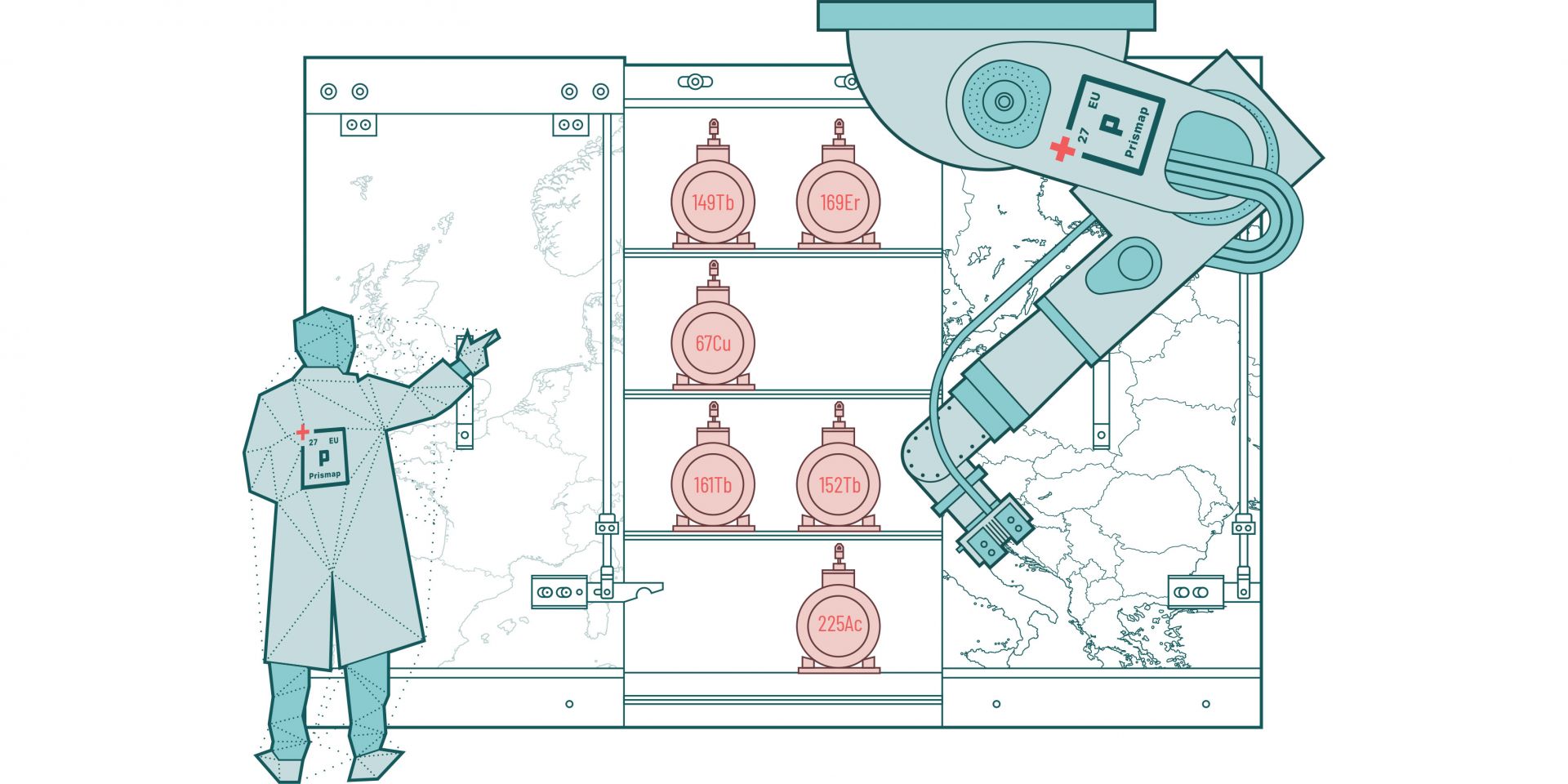The temporary pair of correlated nucleons pictured here is highlighted in purple. (Image: Institute of Nuclear Physics, Polish Academy of Sciences)
A breakthrough in the understanding of the properties of nuclear structure has been achieved by an international team of scientists comprising researchers from Massachusetts Institute of Technology, Fermi National Accelerator Laboratory, University of Munster in Germany, and Institute of Nuclear Physics at the Polish Academy of Sciences. The team, from the nCTEQ collaboration investigating nuclear parton (quark and gluon) distribution functions, developed a quark-gluon model that combined low-energy and high-energy concepts to reproduce the properties of atomic nuclei.
A conceptual image of collaboration across Europe. (Image: PRISMAP/SCIPROM)
Only a few of the more than 3,000 radioisotopes that scientists have synthesized in the laboratory are regularly used in diagnostic or therapeutic medicine. One significant barrier to the development of new medical radioisotopes is the difficulty of gaining access to radionuclides during the early stages of development and research. PRISMAP is a new medical radionuclide program designed to streamline that access for medical research in the European Union and the United Kingdom.



